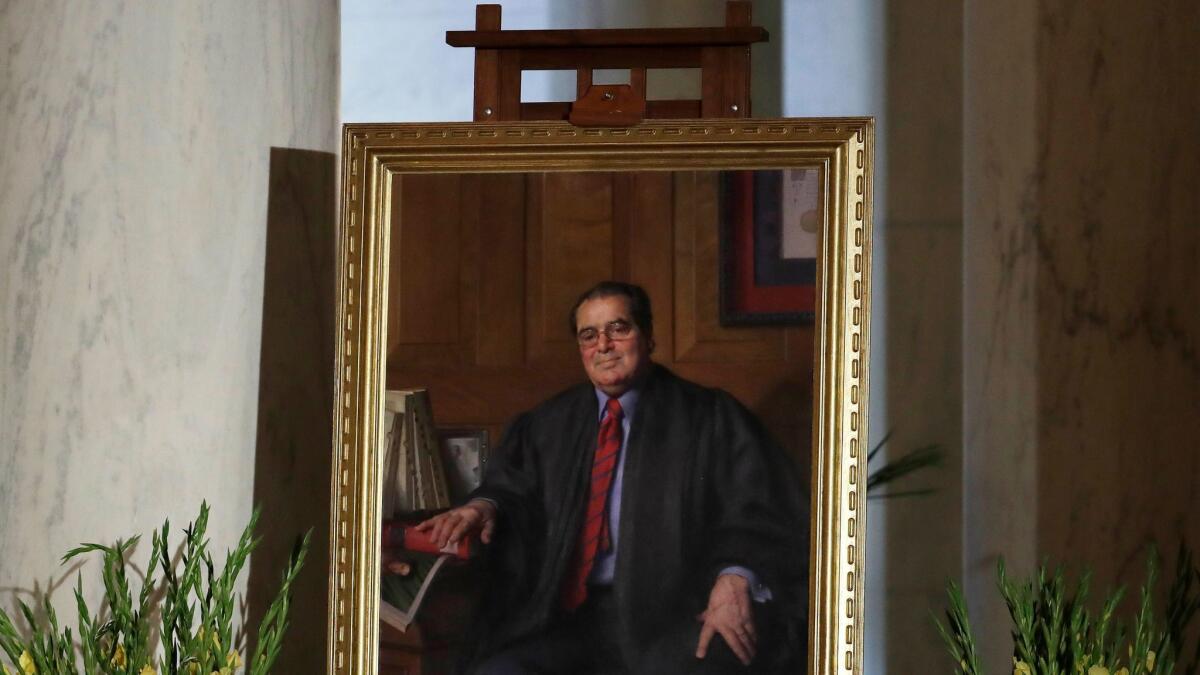This Congress filled the fewest judgeships since 1952. That leaves a big opening for Trump

- Share via
Reporting from Washington — President-elect Donald Trump will take office with a chance to fill more than 100 seats on the federal courts, thanks mostly to an extraordinary two-year slowdown in judicial confirmations engineered by Senate Majority Leader Mitch McConnell of Kentucky.
Since Republicans took control of the Senate at the beginning of the 114th Congress last year, senators have voted to confirm only 22 of President Obama’s judicial nominees. That’s the lowest total since 1951-52, in the final years of Harry Truman’s presidency.
By contrast, when Democrats controlled the Senate in the last two years of George W. Bush’s presidency, 68 of his judicial nominees were confirmed.
More than twice as many vacancies, 107, exist on federal benches than when Bush left office.
In total, the Administrative Office of the U.S. Courts counts 890 slots for full-time federal judges. Federal district courts have 84 vacancies, and the regional circuit courts of appeal have another 14. The specialized appeals courts for international trade and federal claims have eight vacant seats. The 107th vacancy is the best-known: the Supreme Court seat of the late Justice Antonin Scalia.
The vacancies reflect a long-term goal of McConnell and other leading Republicans to tilt the court system toward conservatives.
“There was an almost total breakdown of confirmations once the Republicans took control of the Senate,” said Russell Wheeler of the Brookings Institution, who closely tracks federal judges.
Once Trump takes office, the GOP has perhaps its best chance yet to reach its goal.
Wheeler said Democratic appointees now account for 51% of the judges on the district and appellate courts, reflecting the selections of Obama and President Clinton. But, he said, Trump could tilt the majority back to Republicans within four years aided by both retirements and the unusual number of vacancies.
Senate Republicans defend the high number of vacancies by pointing to the total appointments made during Obama’s presidency. Over his eight years, Obama appointed 329 judges to the federal courts, slightly more than the 326 appointments made by President George W. Bush.
For the 4th time, the Electoral College picks the loser of the popular vote. »
Neither did as well as the two-term presidents who preceded them. President Reagan appointed 384 judges in total, while Clinton named 379. Reagan’s picks included three new Supreme Court justices, including Scalia; Clinton, Bush and Obama each made two appointments to the Supreme Court.
Beginning with the Reagan era in the 1980s, liberal activists focused on the courts and urged the Senate to block judicial nominees who were seen as too conservative. They succeeded in defeating Judge Robert Bork for the Supreme Court in 1987, a year after blocking a federal judgeship for Jeff Sessions of Alabama. Sessions later was elected to the Senate, and now is set to become the U.S. attorney general under Trump.
President George H.W. Bush’s second Supreme Court nominee, Clarence Thomas, survived a fierce battle to win confirmation on a 52-48 vote in 1991, while several of George W. Bush’s lower courts nominees were filibustered for a time by Senate Democrats. They included Judge William Pryor, an Alabama protégé of Sessions who is now a leading candidate for the vacant Supreme Court seat.
For their part, conservative activists have attacked nominees of Clinton and Obama as too liberal, but Republicans have mostly avoided pitched battles. Rather, they have used low-key tactics of delay and refusals to allow floor votes, even when Democrats held the majority in the Senate. Because it takes 60 votes in the 100-member Senate to cut off debate and hold a final vote, the minority party could block the president’s nominees, even if they had majority support.
In frustration, Senate Democrats in 2013 used their majority to change the rules and abolish the filibuster option for lower-court judges. This cleared the way for dozens of Obama’s stalled nominees to be confirmed, including three new judges for the U.S. Court of Appeals for the District of Columbia.
But that gambit came with a price. When McConnell and the Republicans took control in 2015, they said they saw no need to move forward with judicial nominees, since Obama was then well ahead of the pace set under President Bush.
And when Trump sends up his nominees for the vacant lower-court positions, the minority Democrats will not be able to block a vote on their confirmation.
On Twitter: DavidGSavage
ALSO:
Trump’s victory assures a conservative majority on the Supreme Court
Can Trump put another Justice Scalia on the Supreme Court?
More to Read
Get the L.A. Times Politics newsletter
Deeply reported insights into legislation, politics and policy from Sacramento, Washington and beyond. In your inbox three times per week.
You may occasionally receive promotional content from the Los Angeles Times.











